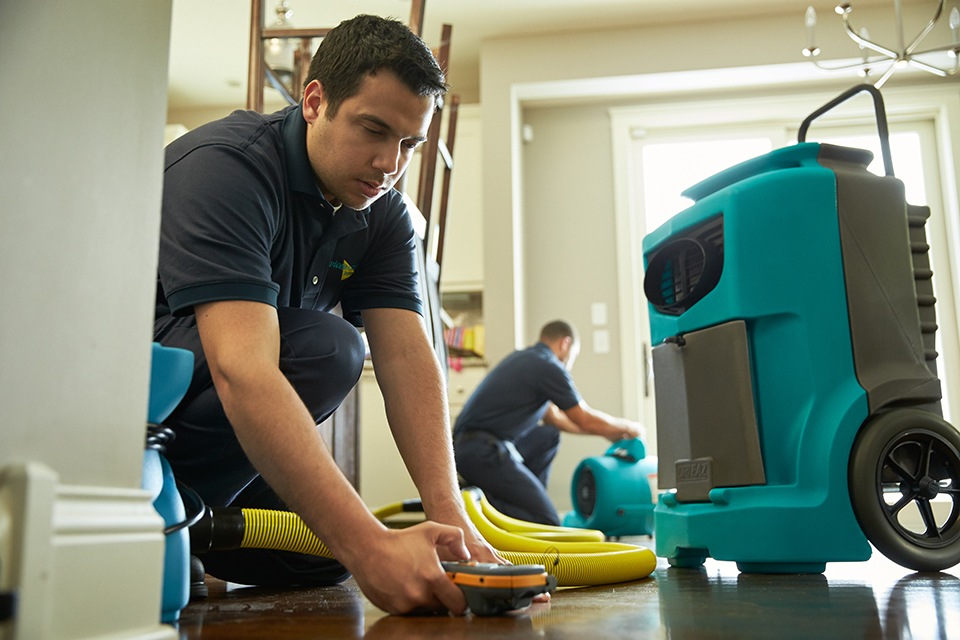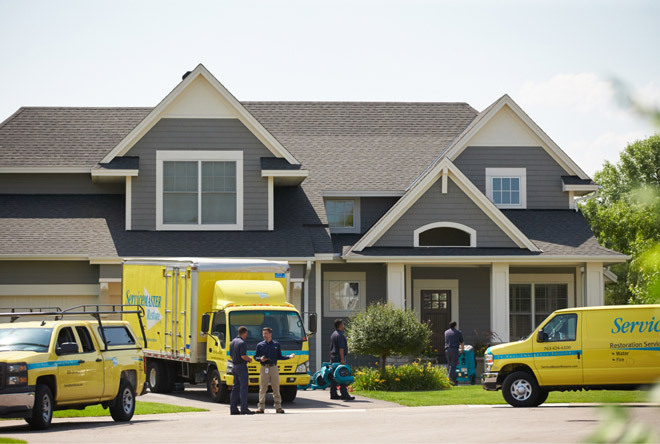Mold Remediation
The best way to deal with mold is to prevent it from happening. If the drying of wet building materials is commenced within 24 hours, the chances of preventing mold growth are excellent. If building materials remain wet, it is inevitable that mold will start to grow. Therefore, addressing and eliminating moisture problems is the critical first step.

ServiceMaster Restore® Mold Remediation Team Adheres to the Following Procedures:
Assess the Damage
ServiceMaster Restore® uses specialized moisture meters to check walls, ceilings, wood floors and other areas of your property for signs of dampness and moisture.
Extract & Dry
We use our state-of-the-art water extraction and dehumidification equipment to confirm water is extracted from floors, walls, cabinets, carpets, upholstery or other fabrics. This greatly reduces the possibility of mold proliferation.
Seal Off All Contaminated Areas
We seal off the affected area to eliminate the risk of airborne spores spreading to unaffected areas.
Remove Affected Materials
Drywall and other affected building materials in your home or building need to be professionally removed, immediately.
Final Stage
HEPA-vacuum and seal contaminated areas.
If more than 10 square feet is affected, it may be necessary for the customer to hire an Industrial Hygienist to perform an assessment and write a protocol for services to be performed before any work can be performed by ServiceMaster Restore®. The Industrial Hygienist will perform a final evaluation once ServiceMaster Restore® has completed the remediation to insure that all work performed meets the standards and guidelines set forth by the restoration industry. Below are some references to the industry guidelines.

Mold Removal FAQs
What is mold?
We have probably all encountered mold at one time or another. It might have been in the shower, or on a stale piece of bread or wet drywall. Mold is a microscopic life form found in all parts of the world. It is part of the natural decay process of organic materials.
There are many different species of mold, and while they are diverse, they share some common characteristics:
- Molds require an organic food source. The most common food source indoors is cellulose, which is found in building materials such as wood and drywall.
- Molds require oxygen, so they do not grow under water.
- Molds require moisture. To prevent mold, buildings must be kept dry.
- Molds are spread by tiny particles called “spores.”
Remember:Mold needs three things present to form and grow:
humidity, temperature, and moisture.
Why is mold a problem?
The colored, fuzzy growth on the surface of a wall, floor, ceiling or other indoor surface is obviously very objectionable. Active mold colonies usually emit a very unpleasant, musty odor.
Because the job of mold is to digest, decay and recycle dead organic matter, it will eventually destroy whatever surface it grows on. Exposure to mold spores can cause mild to severe allergic reactions, depending on individual sensitivity.


